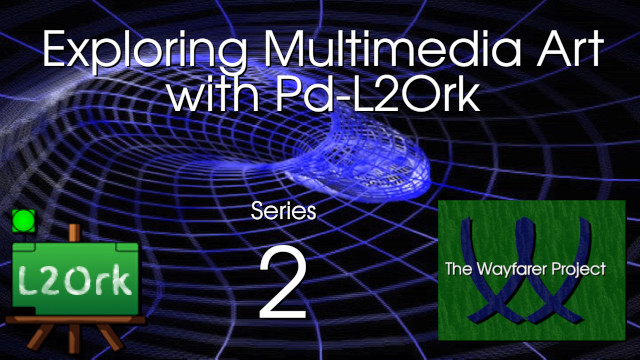
Making a Visualizer for Your Music
In this second series of Exploring Multimedia Art with Pd-L2Ork, the focus will be on making visualizations for music by putting together patches that are audio-reactive and allow one to have visualizations generated that enhance live performances. The series begins with GEM and the particle systems library that it has. Particles can be used to make some stellar moving artwork and we will start be exploring them.
Episode 01 – Visualizations with Particle Systems in GEM Part 1
Dr. Lawrence W. Moore continues his exploration of multimedia art using the free and open source software, Pd_L2Ork. This flavor of Pure Data has a powerful set of externals and its own unique data structures that make is very useful to artists who want to combine audio and video in creative ways. In this first episode of Series 02, we continue working with GEM, the Graphics Environment for Multimedia external for Pure Data that comes in a stable form in Pd-L2Ork. One truly fascinating set of tools in this wide library of programming possibilities is particle systems. Particle systems can be used in a variety of ways to create moving visualizations that have a lot of aspects that can be manipulated and transformed by different values. Ultimately, they should prove to be very useful in making visualizations for music. Ultimately, the goal is to make an audio-reactive visualization gnerator for real time music enhancement in performance.
Episode 02 – GEM Particle Part 2 – Orbit, Gravity, and Render
Our goal is to find what can be done with GEM within Pd-L2Ork and Pure Data that can help us to make a visualizer for our music. In the first episode, we looked at particle systems basics. In this episode, we look at some powerful functions that can make some stunning motion graphics in GEM’s 3D stage. Orbit allows one to set a point that generated particles can be attracted to with varying gravity while the gravity function allows one to set a point of gravity to influence the direction of particles. The render function is powerful in that it allows one to create different objects that the particles become when generated.







